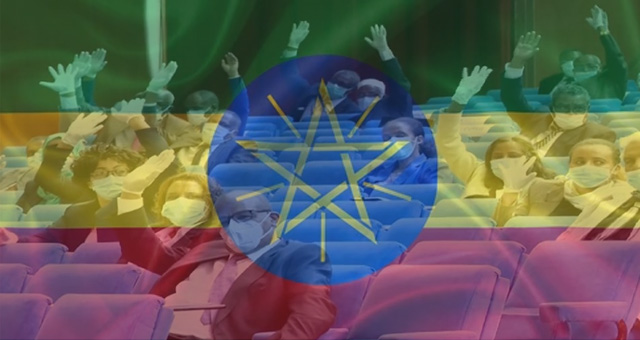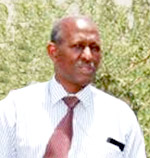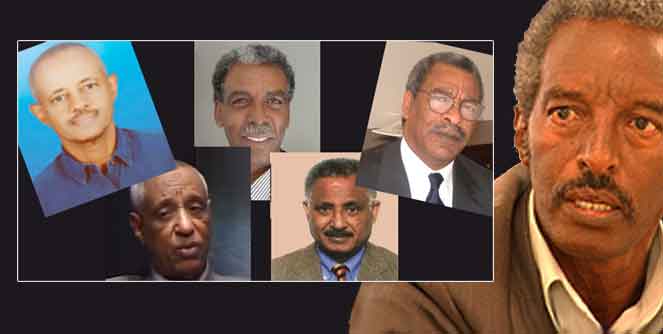Shifting Alliances: The Killing And Kidnapping Of European Tourists

On Tuesday, January 17, 2012, five European tourists were killed in Northern Ethiopia’s Afar Region, which borders Eritrea.
Ethiopia claims that the attack was carried by gunmen stationed in, and supported by, Eritrea. The Eritrean envoy to the AU denied the accusation.
The Ethiopian government was referring to Qafar Uguugumoh Demokrasiyyoh Inkiinoh Fooca [Uguugumoh for short; or Afar Revolutionary Democratic Unity Front (ARDUF for short)], a rebel group whose goal is to unite Afar nationalities of Ethiopia, Eritrea, and Djibouti under one political entity. Although, technically, Uguugumoh should be in confrontation against all three governments, its attacks have concentrated only on Ethiopian forces.
The five killed tourists include two Germans, two Hungarians and an Austrian. Two others were wounded, an Italian and a Hungarian. Four people were captured and taken by the attackers.
Uguugumoh (ARDUF) claims that the tourists were killed in an attack initiated by the Ethiopian security forces.
In a statement it issued on January 21, ARDUF confirmed that the two German tourists and two Ethiopian soldiers captured in the attack were in its custody. It also stated that “Ethiopia’s continuous fresh attack on its forces has stifled the release of the captured tourists” warning “If these two remaining German [tourists] are killed in the fighting, [the] Ethiopian regime” would be responsible.
On February 8, 2012, ARDUF issued another press release where it claimed to have clashed with Ethiopian forces and killed several troops and destroyed vehicles. ARDUF also repeated its earlier warning that, “If these two remaining German nations are killed in the fighting, [the] Ethiopian regime will bear another responsibility for the killing of European nationals, as the regime was responsible for the previous killings of 5 European[s] on 17th January 2012, in Erta Ale, Afar region.”
ARDUF also stated that it would “release the two German citizens unconditionally, as soon as the Afar Elders arrive to the designated area to receive them. Meanwhile, any groups or individuals who claim facilitating the release of these two people should not be trusted by concerned authority.”
Afar tribal elders from the region have been trying to secure the release of the two Germans with no success so far. The elders have been instrumental in releasing several kidnapped tourist in the past.
Meanwhile, Ethiopia has warned the international community that unless it takes action to restrain Eritrea, it would take action to protect itself.
According to the Algiers Peace Agreement, Eritrea and Ethiopia were to have a 25-km buffer zone, monitored by the United Nations, along their common border until the area was demarcated. The UN monitors (UNMEE) were placed in 2001. The Ethiopian government would not agree to demarcate the border in accordance with the terms of the Eritrea Ethiopia Boundary Commission (EEBC) unless the fate of the people and the villages in the border area are resolved first through a dialogue with the Eritrean government. The Eritrean Government rejected Ethiopia’s call for dialogue and insisted on demarcating the border as per the ruling of the EEBC. That deadlock resulted in EEBC’s decision to “virtually demarcate” the border. Subsequently the Eritrean government initiated a campaign to make the work of UNMEE so difficult that it had to withdraw. The border, now, is entirely un-monitored and it takes only a trigger action to restart the conflict.
Background
This is not the first time that ARDUF has taken Europeans as prisoners. On March 1st 2007, five Britons, all employees of the British Foreign Office, along with 8 of their local tour guides, were kidnapped from Hameid Eila (village bordering Eritrea) by ARDUF. The police chief of the local government reported that the kidnapped had been taken to Weima, a military base in Eritrea. The Britons were released two weeks later, after Afar elders negotiated their release and surrendered them to the Eritrean government. The Ethiopian hostages were held for two more weeks, then released.
The chairman of ARDUF, Mussa Ibrahim, who was visiting Eritrea was quoted by Eritrea’s Ministry of Information saying that “even now it [ARDUF] would take similar measures against any foreigner who ventures into the same area” and “warned foreigners not do so without permission from the Front.”
The Ethiopian government saw this as clear evidence of collusion between ARDUF and Eritrea.
The accusation and counter accusation of the Eritrean and Ethiopian government is a far cry from the 1990s. In March 1995, ARDUF (or its predecessor) was accused of kidnapping Italian aid workers in the Afar region. At the time, the Eritrean and Ethiopian governments were close allies, with a mutual defense agreement, and the two co-operated closely in the hunt for ARDUF rebels. The Ethiopian government’s “hot pursuit” sometimes resulted in crossing the Eritrean border, an issue that came to light when the mail exchanges between Prime Minister Meles Zenawi and President Isaias Afwerki were shared with Eritrean state media shortly after the ignition of their border war in 1998.
Throughout the two-year border war, ARDUF declared a “unilateral ceasefire with the government of Ethiopia.” In a statement its Executive Committee issued, ARDUF stated that its goal had always been to liberate the Afars of the Western Red Sea “from the military occupation of the EPLF [Eritrean government] and incorporate the region with its mother land” and that it had only been the Ethiopian government’s “short-sighted military accord and unholy alliance with the EPLF government of Eritrea” that forced its hand.
Since 1991, then, there has been a shifting alliance between the three entities:
1991 – 1997: Eritrean and Ethiopian government versus ARDUF
1998 – 2003: Ethiopian government and ARDUF versus Eritrea
2004 – present: Eritrean government and ARDUF versus Ethiopian government




Awate Forum